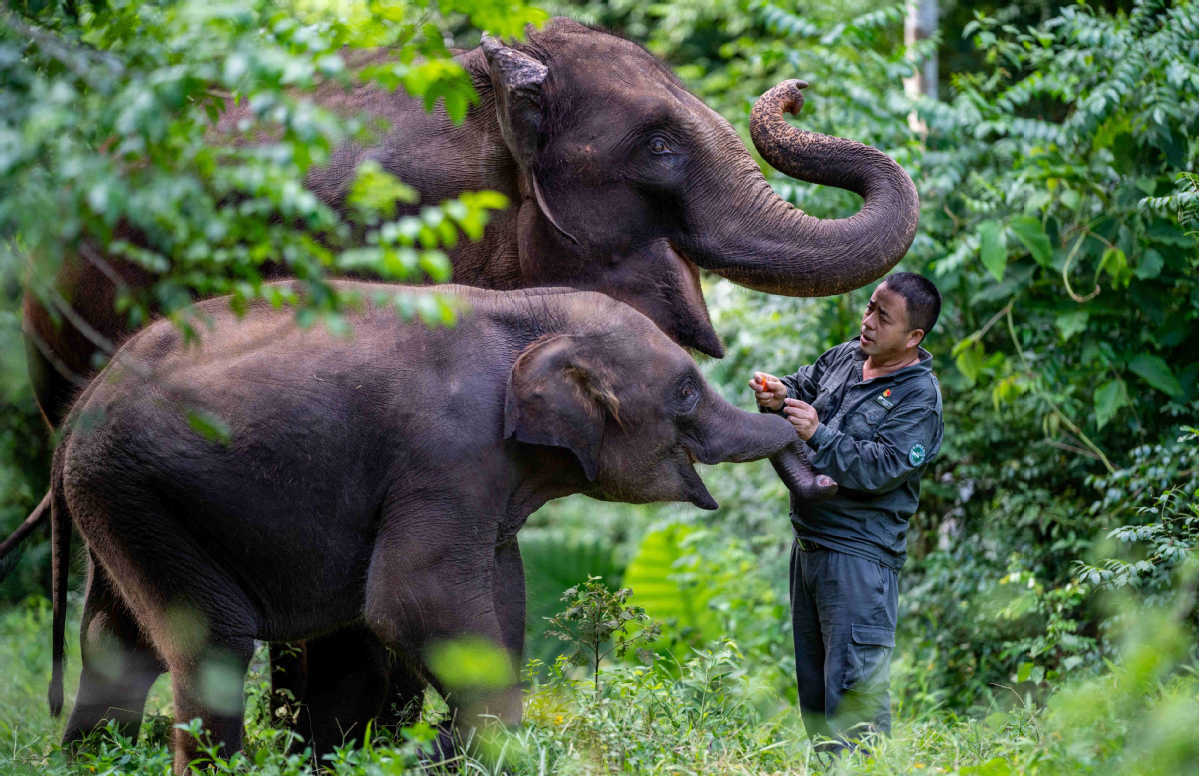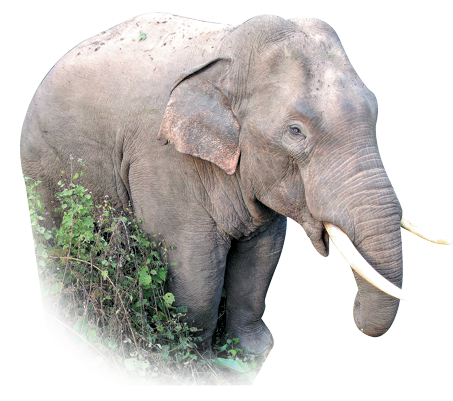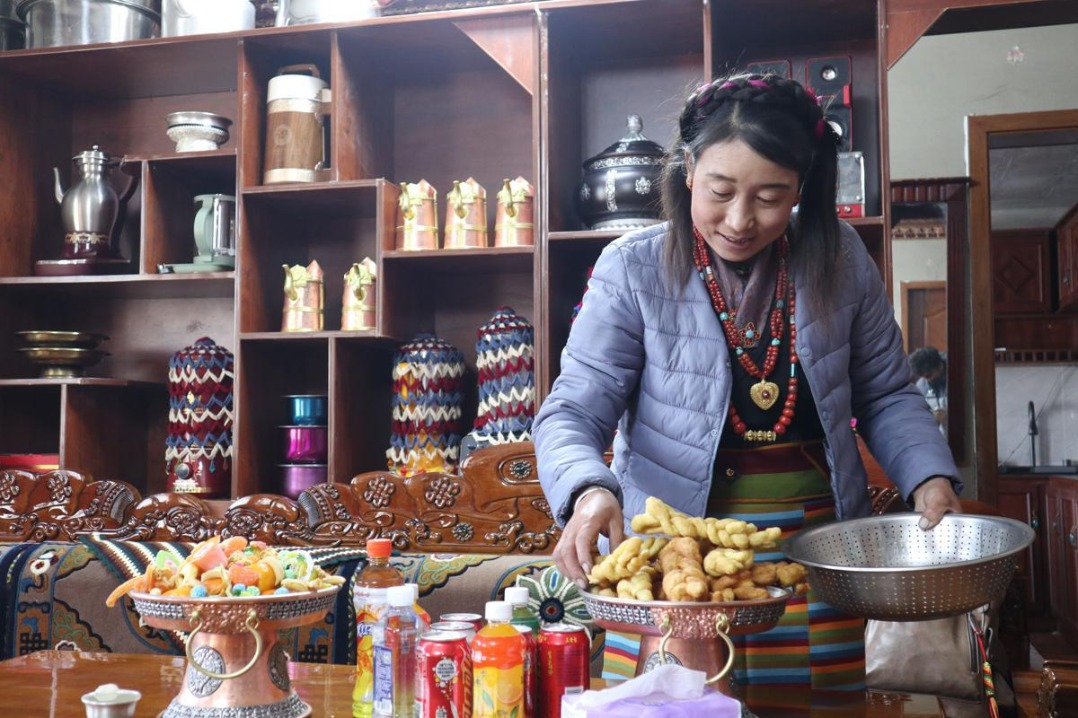Action taken to reduce conflict with elephants


Measures help safeguard villagers, protect homes and crops
Bao Mingwei, 42, a senior veterinarian at an elephant reserve in Yunnan province, thinks he knows the secret of his innate ability to attract the giant creatures. "Maybe I just smell like them," he said.
"Sometimes I have to stand in the elephants' dung, while other times my clothes are stained by them. We vets are also at risk of being attacked," said Bao, who has worked at Wild Elephant Valley in the Xishuangbanna Dai autonomous prefecture for 22 years and is known as an "elephant doctor".
In March last year, the story of a group of wandering Asian elephants made news around the world.
Three months later, a young male elephant left the herd and wandered alone for about 30 days. To ensure its safety, Bao anesthetized the animal and took it to the Xishuangbanna National Nature Reserve. It was the first case in China of a wild elephant being taken back to its habitat after roaming over a long distance.
"There is scant material to refer to when rescuing elephants. Most of the time, we rely on our experience," Bao said.
Bao followed the elephant for 33 days, estimating its weight by observing the animal's physique, teeth and footprints in order to administer the correct dose of anesthetic.
On Aug 8 last year, more than 10 elephants returned to their habitat in the Mengyang area of Xishuangbanna National Nature Reserve after wandering for 1,300 kilometers in about 110 days. Tens of thousands of people helped track the animals' movements and guide them home.

Chen Fei, director of the Asian elephants research center at the National Forestry and Grassland Administration, said the herd has separated into two groups, one of which has joined a large family of elephants.
"This means that in general the elephant population is healthy and that there are frequent exchanges between herds," Chen said.
He added that an elephant calf born at the reserve is doing well.
The Asian elephant, the continent's largest land mammal, is native to a total of 13 countries and regions. There are estimated to be 40,000 to 50,000 of the animals in the world. In China, the species is a first-class protected wild animal, and is found mainly in Xishuangbanna, Pu'er and Lincang, Yunnan.
Despite the population of Asian elephants falling over the past 30 years, the number of the animals in China rose to about 300 by the end of last year, meaning that the relationship between humans and the elephants had become more harmonious, according to experts.
Chen said: "The number has risen by about 100 over the past decade. Individual young elephants are also being observed more frequently."
























